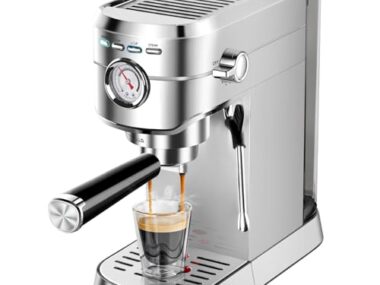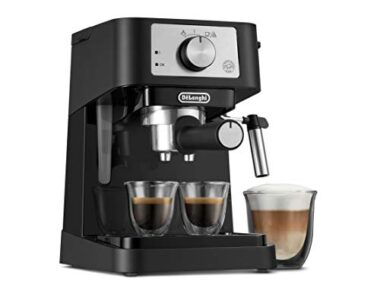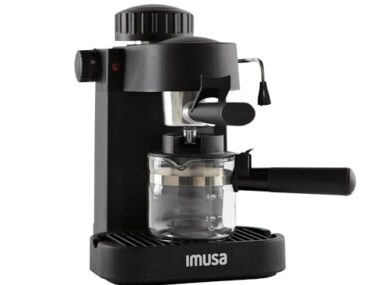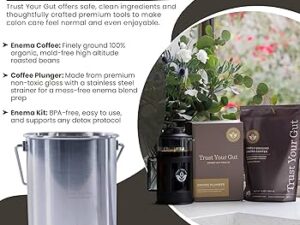Are you confused about the difference between an espresso machine and a regular coffee machine? You’re not alone.
Choosing the right machine can change how you enjoy your daily cup of coffee. Whether you want a strong, rich espresso or a smooth, classic coffee, understanding these machines will help you make the best choice for your taste and lifestyle.
Keep reading to discover the key differences that will transform how you brew at home.
Espresso Machine Basics
Espresso machines are special tools made to brew strong coffee called espresso. They use high pressure to push hot water through finely ground coffee. This process makes a small, thick, and rich coffee shot. Espresso machines differ from regular coffee makers, which use slower dripping methods.
Understanding how espresso machines work helps you see why espresso tastes different. These machines have unique parts that work together to make espresso fast. Learning about these parts shows the science behind your favorite coffee shot.
How Espresso Machines Work
Espresso machines heat water to about 90-96°C (194-205°F). Then, they force this hot water through tightly packed coffee grounds. The machine uses pressure, usually 9 bars, to push water fast. This pressure extracts oils and flavors quickly. The result is a strong, creamy coffee called espresso.
The brewing process takes around 25-30 seconds. This short time helps keep the coffee’s rich taste and smooth texture. The pressure also creates crema, a golden layer on top of espresso.
Key Components Of Espresso Machines
The main parts include the boiler, group head, portafilter, and pump. The boiler heats the water to the right temperature. The group head holds the coffee grounds and controls water flow. The portafilter is a handle with a basket for coffee grounds. The pump creates the high pressure needed for extraction.
Other parts like steam wands help froth milk for drinks like cappuccinos. Each piece plays a role in delivering perfect espresso shots every time.

Credit: www.youtube.com
Coffee Machine Essentials
Coffee machines are a common sight in many homes and offices. They brew coffee quickly and bring fresh aroma to your cup. Knowing the basics helps you choose the right machine. It also helps you understand how your coffee is made.
Different machines have different ways of working. They vary in size, price, and style. Some are simple and manual. Others are automatic and packed with features. Learning about these machines makes your coffee routine better.
How Coffee Machines Operate
Coffee machines heat water to the right temperature. Then, they push or drip this water through ground coffee. This process extracts flavors and oils from the coffee. The result is a fresh cup of coffee ready to enjoy.
Some machines use pressure to force water quickly. Others let water drip slowly over the coffee grounds. The speed and method affect the taste and strength of coffee. This is why different machines produce different flavors.
Types Of Coffee Machines
There are many types of coffee machines. Drip coffee makers are common and easy to use. They drip hot water over coffee grounds slowly. This makes a smooth and mild coffee.
Espresso machines use high pressure to brew coffee fast. This results in a strong and bold coffee shot. Capsule machines use pods for convenience. They make coffee quickly but with less control.
French press and pour-over are manual methods. They require more time and skill but offer full control over brewing. Each type suits different tastes and needs.
Brewing Process Differences
The brewing process is the heart of both espresso and coffee machines. It shapes the flavor and strength of your drink. Though both machines use water and coffee grounds, they differ in how they brew. This difference impacts taste, texture, and caffeine levels.
Pressure And Temperature Variations
Espresso machines use high pressure to force water through finely ground coffee. The pressure usually reaches 9 bars or more. This extracts strong flavors quickly. The water temperature stays around 90-96°C (194-205°F).
Regular coffee machines use gravity to drip hot water over coarser grounds. The pressure is much lower, near 1 bar. Water temperature is similar but can vary more. This results in a lighter and smoother brew.
Extraction Time Comparison
Espresso machines extract coffee in 25 to 30 seconds. This short time creates a concentrated shot. It captures oils and rich flavors fast.
Coffee machines take longer, usually 4 to 5 minutes. The slow drip extracts flavors gently. It produces a milder and larger cup of coffee.
Taste And Texture Contrast
Taste and texture are key differences between espresso and coffee machine brews. These differences shape your entire drinking experience. Each machine extracts flavors and textures in unique ways. This affects how bold, smooth, or rich the drink feels on your palate.
Flavor Profiles
Espresso offers a strong, concentrated flavor. It has a bold and intense taste. You often find hints of chocolate, caramel, or fruit in espresso. The quick extraction locks in these flavors tightly.
Coffee from a machine usually tastes lighter and more mellow. It has a softer, more balanced flavor. The longer brewing time pulls out different notes. These can be nutty, floral, or even slightly acidic.
Crema And Body Differences
Espresso has a thick, golden layer called crema on top. This crema adds a creamy texture and rich mouthfeel. It gives espresso its signature smoothness and depth.
Coffee machine brews lack crema and have a thinner body. The texture is usually lighter and more watery. This makes the coffee easier to sip slowly over time.
Machine Design And Size
Machine design and size play a big role in choosing between an espresso machine and a regular coffee machine. Each has unique shapes and builds. These differences affect how you use and where you place them.
Understanding these design features helps you pick the right machine for your space and needs.
Portability And Space
Espresso machines tend to be smaller but heavier. They need solid parts inside to create high pressure. This makes them less easy to move around. Usually, they fit well on kitchen counters but take up more vertical space.
Coffee machines come in many sizes. Some are compact and light, perfect for small kitchens or offices. Others are larger but still easy to carry. They usually need less vertical space than espresso machines.
Material And Build
Espresso machines often use metal parts like stainless steel and aluminum. These materials help handle heat and pressure well. The build is solid and strong for long use.
Coffee machines usually use plastic and metal mixes. Plastic keeps them lighter and cheaper. They work well for regular brewing but may not last as long as espresso machines.
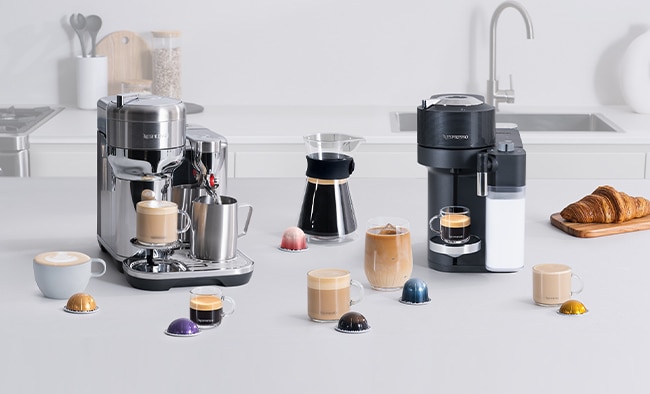
Credit: www.nespresso.com
Maintenance And Cleaning
Maintaining and cleaning espresso and coffee machines is essential for good taste and machine life. Both types need regular care but have different needs. Proper cleaning stops build-up and keeps machines working well. This section explains how to keep each machine in top shape.
Routine Upkeep
Espresso machines need daily cleaning of the portafilter and group head. Wipe steam wands after every use to prevent milk residue. Backflush the machine weekly with special detergent to clean internal parts.
Coffee machines require rinsing the basket and carafe after each use. Clean water reservoirs often to avoid mold. Descaling every month removes mineral build-up and keeps brewing smooth.
Common Issues
Espresso machines often face clogged filters and blocked steam wands. These cause weak shots and poor milk frothing. Regular cleaning prevents these problems.
Coffee machines can suffer from slow brewing or bitter taste. Mineral deposits or old coffee oils cause this. Descaling and thorough cleaning solve these issues fast.
Cost And Investment
Cost and investment play a big role in choosing between an espresso machine and a regular coffee machine. Both types of machines vary widely in price. Understanding these differences helps make a smart choice. Budget matters, but so does what you get for your money. Let’s explore the price ranges and value for money for each machine.
Price Range Comparison
Espresso machines usually cost more than regular coffee machines. Basic coffee makers can be found for as low as $20. Mid-range models often cost between $50 and $150. High-end coffee makers may reach $300 or more.
Espresso machines start around $100 for simple models. Most quality espresso machines range from $200 to $1,000. Professional or advanced machines can go beyond $2,000. The price depends on features and build quality.
Value For Money
Regular coffee machines offer good value for everyday use. They are simple, fast, and affordable. Maintenance and repairs are usually cheaper.
Espresso machines deliver richer, stronger coffee. They suit those who enjoy specialty drinks. The higher cost can be worth it for coffee lovers. Espresso machines may save money compared to buying coffee at cafes daily.
Both machines have value depending on your coffee habits. Consider how much you spend on coffee outside. Think about how often you use the machine. This helps decide which investment makes sense.

Credit: cornercoffeestore.com
Choosing The Right Machine
Choosing the right machine for your coffee needs can be simple. It depends on what you enjoy and how you live. Both espresso machines and coffee makers serve different purposes. Knowing the difference helps you pick the best one for your daily routine.
User Preferences
Some people want strong, rich coffee quickly. Espresso machines make small, intense shots of coffee. Others like a larger, milder cup. Coffee machines brew a full pot to share or enjoy slowly. Think about the taste and strength you prefer. Do you want foam on top? Espresso machines create crema, a creamy layer many love. Coffee makers give a smooth, simple cup without foam.
Lifestyle Considerations
How much time do you have each morning? Espresso machines often need more time and skill. They require grinding, tamping, and cleaning parts. Coffee machines are easier and faster for busy mornings. Consider the space in your kitchen. Espresso machines can be larger and more complex. Coffee machines come in many sizes and styles. Choose a machine that fits your kitchen and daily habits well.
Frequently Asked Questions
What Is An Espresso Machine?
An espresso machine brews coffee by forcing hot water through finely-ground coffee. It produces a strong, concentrated coffee shot known as espresso.
How Does A Coffee Machine Work?
A coffee machine brews coffee by dripping hot water through ground coffee. It creates a milder, larger cup compared to espresso machines.
Can Espresso Machines Make Regular Coffee?
Most espresso machines focus on espresso but some have settings for regular coffee. However, the taste and strength differ from traditional coffee machines.
What Are The Main Differences In Brewing Process?
Espresso machines use high pressure and fine grounds for quick extraction. Coffee machines use gravity and coarser grounds, resulting in a slower brew.
Conclusion
Espresso machines and coffee machines serve different purposes. Espresso machines make strong, concentrated coffee quickly. Coffee machines brew larger, milder cups of coffee. Choosing the right machine depends on your taste and needs. Both machines have unique benefits for daily coffee lovers.
Understanding their differences helps you pick the best one. Enjoy your perfect cup, whether espresso or regular coffee. Simple choices bring great coffee moments at home.
